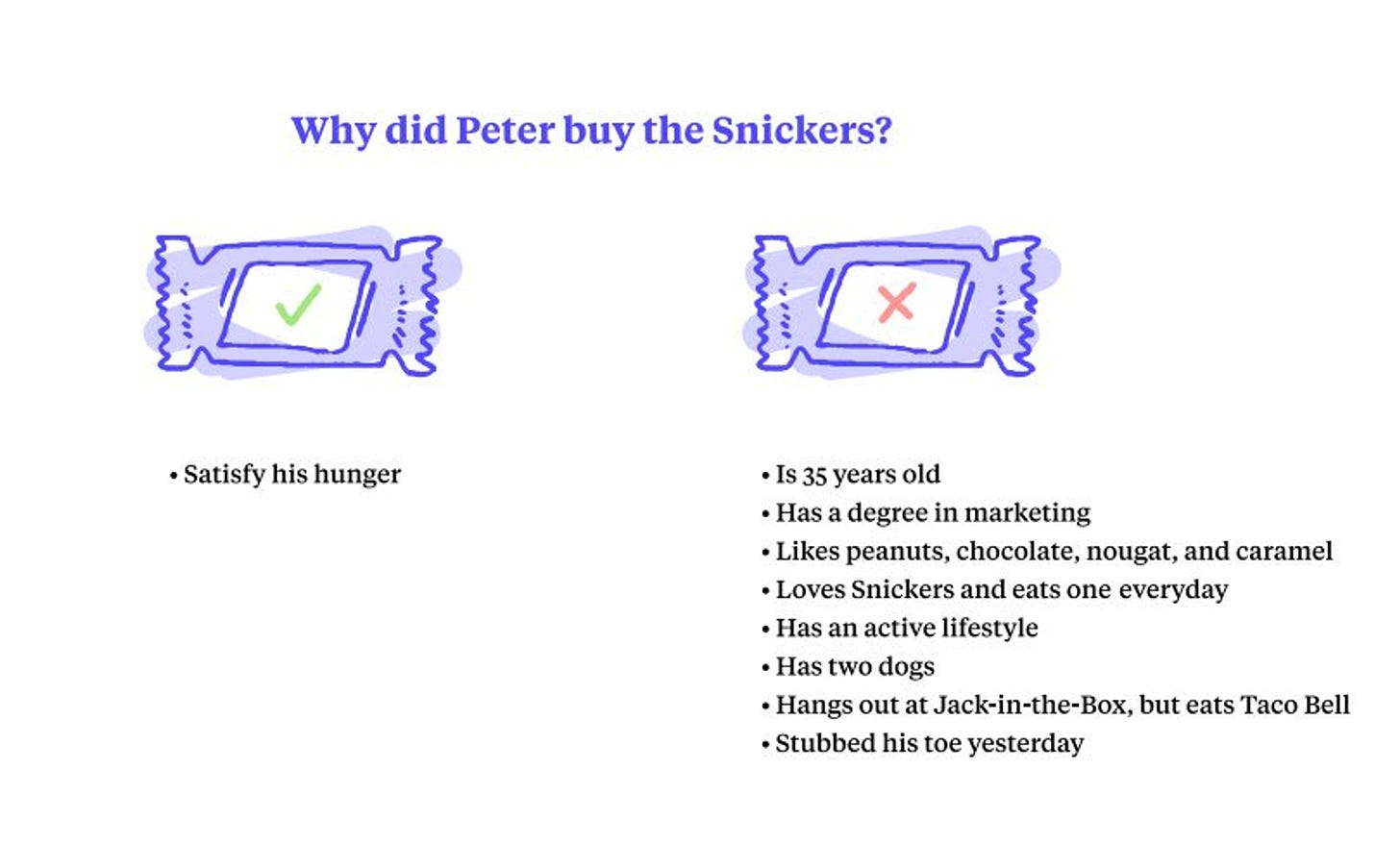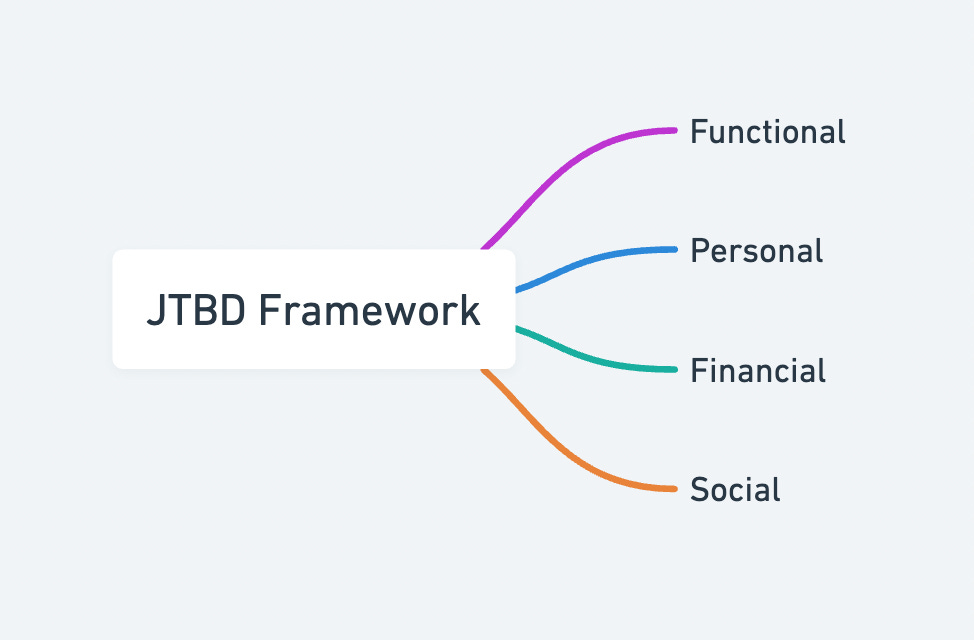As product managers, we are always supposed to come up with ways to solve user problems while also moving metrics and making money for the business. That seems like a very tough job already, but it becomes even more difficulty when you don't understand what your users really want or more importantly, what they need.
Jobs To Be Done is a framework that is often used to understand exactly what the user needs and why. It's a simple framework but if implemented well, it can make your job a lot easier. So, let's talk a bit about the framework.
What does a “Job” mean?
When was the last time you bought a pen? Maybe a month ago, maybe a year ago, maybe yesterday. Anyway, the duration is not important. What's important is you buying the pen.
Why did you buy that pen? Can you remember?
I think the last time I bought a pen was around 2 months ago because I wanted to take some notes on my notebook. My specific requirement was to take notes on my notebook, not just to take notes.
In this case, the job I wanted to get done was 'take notes on a notebook' and to do this job, I needed something - the pen. So, in a way I can say that I hired the pen to do a job for me which I was unable to do without it.
But, what if my intended task i.e. the job was to just 'take notes' irrespective of the medium. Then, I might have used my phone or my laptop. So, I would have hired a laptop or phone to do the job for me.
So, as a user, based on my intended task or based on the job I wanted to get done, the product I hired changed, although the task were pretty similar.
In product, we think of everything as “problems”. We ask “What problem is the user facing that we can solve?”
JTBD is similar, but here we don't only look for problem, but for all the needs of the user. We look at the things that the user wants to achieve and think of all the ways that we can make that happen.

Jobs To Be Done
Below is an excerpt from a HBR article:
*After decades of watching great companies fail, we've come to the conclusion that the focus on correlation—and on knowing more and more about customers—is taking firms in the wrong direction. What they really need to home in on is the progress that the customer is trying to make in a given circumstance—what the customer hopes to accomplish. This is what we've come to call the job to be done.*
JTBD framework tells us that users use products in certain situations when they want to achieve a specific outcome because of some reason that acts as their motivation.
The core value of this framework is that it provides an approach to gathering an understanding of who your user is, and what their motivations and hopes are.
JTBD can be broken down into four basic factors. While some products will serve all the four sections, it's not mandatory for all products. Some products or services will serve only one of these sections.

A common mistake people make while implementing JTBD framework is to only consider the functional aspect of the product while ignoring the personal and social factors.
For Example:
If you buy a shoe, the functional goal is to protect your toes and heel when you walk on the road.
If you're buying a pair of gym shoes, the personal goal is to perform better in your workouts.
If you buy a pair of unbranded shoes, the financial goal is to save money while buying shoes.
If you buy a pair of Nike shoes, the social goal is to signal that you are wealthy enough to buy them.
How to Write a JTBD Statement
Start by defining your audience clearly
Think about the defining characteristics that help you develop a crystal-clear image in your head of your audience. Without a clear definition, you risk going too broad or gathering signal from the wrong kinds of people.
Ground yourself in market research
Understand as much as possible about this audience's behaviour: what they currently are using to solve this specific problem and where they feel the most pain in the customer experience.
Talk to your users
Using surveys and interviews, get a firsthand account about your user's mindset and decision process (related to what you are building).
Prioritise
There are many customer jobs your product could tackle, but focus is paramount here. From user interviews, look for themes that emerge in jobs to be done. Narrow down jobs and prioritise those with the most demand and the largest gap to be filled.
Here's a JTBD statement template that is commonly used amongst Meta product teams:
When I…… (context) But…… (barrier) Help me…. (goal) So I….. (outcome)
Or, we can use this template too:

For example:
For an online learning platform, the JTBD statement might be - “When I'm trying to learn a new skill, I want to practice with real-world projects and build my portfolio so that I can get a job”
Why is JTBD important for Product Managers?
As a product manager, your job is to build products that helps the user and makes the company money. This is possible only when you give the users what they really want.
It helps in building new products and features
If you understand the intent of the user, it becomes easier to understand their needs and to come up with solutions that will really solve their problems.
For example, Zomato might have this JTBD statement:
“When I'm hungry and want a variety of meal options, I want to browse menus and order food from local restaurants, so I can enjoy a delicious meal at home without the effort of cooking or going out.”
This statement captures the core job that Zomato does for its customers: providing a convenient, diverse food delivery service that can be accessed from anywhere.
Not only for building products, but it is also helpful in improving products by building new features. Let's say that the users of Zomato starts searching for healthy food options on the app. In that scenario, if you can validate this need for a larger audience, you should be able to build a new feature that makes it easy for the users to search for healthier options.
It helps to know who you are competing with
Often times, we get our competitors wrong. If you look at Zomato, who is the competition?
A lot of you might have thought of Swiggy, right? But that's not the ONLY competition. Some other competitors for Zomato are:
- Cooking at home
- The local shop near you
- That Maggi packet sitting in your kitchen cabinet
Understanding these competitors gives a broader view of the competitive landscape and can inform decisions about how to differentiate the product, improve service, and appeal to more customer's needs.
It helps you decide the right positioning
So, we have established that users don't really care that much about what you are giving them unless it solves their problem and helps them do the “job”. This is great because knowing the real need of the user can help you market the right value proposition of the product to the right audience.
Which one do you think is better?
- Learn this new skill
- Get a job in 2 weeks
Both of these statements could be talking about the same thing but might be attractive to very different target segments. That's why positioning is important.


